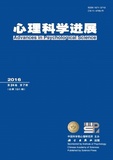There is still much debate over whether older adults have enhanced or attenuated audiovisual integration. Research on the neural mechanism of audiovisual integration in older adults is needed to provide a scientific brain-health programme based on crossmodal integration. Here, we summarized two parts based on previous studies. First, audiovisual integration ability in older adults is influenced by the characteristics of the physical stimuli, the spatial and temporal relationships of the stimuli, and the attentional allocation. Second, audiovisual integration effects are observed in older adults. On the one hand, older adults showed higher functional connectivity, network efficiency and enhanced audiovisual integration effects, such as stronger activity in the posterior parietal lobe, medial prefrontal lobe, left prefrontal lobe, and the super-additive amplitude of P2 observed in the central prefrontal region. In addition, audiovisual integration in older adults occurred earlier and extended longer than that in younger adults. On the other hand, older adults have slower response times and smaller amplitudes to audiovisual stimuli in the superior temporal gyrus than younger adults, which shows a weaker integration facilitation effect in older adults. The study of audiovisual integration in older adults induced by simple stimuli provides a reliable basis for further revealing the integration mechanism, but the processing mechanism of audiovisual integration for complex situations remains to be explored.




